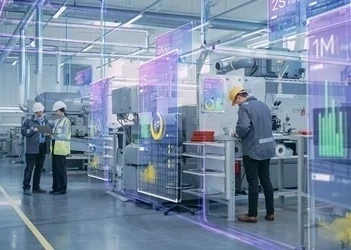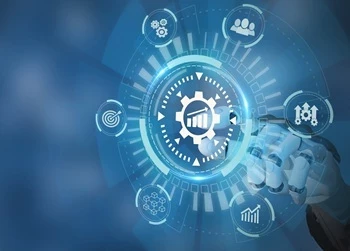4 secret ingredients to cultivate a productive and satisfying hybrid work environment
How tools such as process mining, task mining and digital standard operating procedures can help organizations build productive and harmonious hybrid working environments
Add bookmark
A lot has changed in the last three years when it comes to working styles, especially for office workers. The impact of hybrid working on organizations is big and many teams have not met in-person for months if not years.
After turbulent times with COVID and, nowadays, the surging cost of travel due to high interest rates and inflation, the way we work has become drastically different from what we knew before 2020. As recent news reports have highlighted, implementing hybrid working styles to their organizations is a top priority for HR but, despite taking drastic steps to bring people back to the office, many workers remain resistant.
This article looks at how tools such as process mining, task mining and digital standard operating procedures can help organizations build productive and harmonious hybrid working environments.
WEBINAR: Best practices for overcoming challenges in the energy industry
When the flow of change runs dry, digital standard operating procedures keep organizations alive
In hybrid working environments there is an imminent risk that employees will become disconnected from the expected ways of working, especially when business requirements change.
One of our customers recently reported on a pattern: executives in their offices print out their How-tos and Standard Operating Procedures (SOP) and attach them to the wall. While this appears to be a very pragmatic solution to a simple problem, it exposes big issues and risks to the organization.
Shadow systems (processes, business tasks and workflows that are not formally tracked or monitored by the larger organization) pose an enormous threat to organizations, especially when it comes to safety and compliance matters. If an organization is unaware of a process, it cannot ensure that it meets regulatory, quality or effectiveness standards.
In hybrid work environments, it can be especially difficult to tell if employees are following standard operating procedures or following their own, invisible internal logic. To address this issue, the flow of information on business process updates must be a living flow. If there is an update, it must be deployed to the ones affected in a way that resonates.
Digital standard operating procedures – unlike printed versions – made available in web-based process portals can help keep the flow of change alive. With only a few clicks, people can browse, find what is relevant for their role and proactively adopt changes.
As companies and organizations are continuously subject to change, the flow of information regarding ways of working must be kept active. This gets even more important in working environments which are characterized by hybrid working. Business updates on changed processes must be made available on-the-go to be ready wherever an office worker resides. Process information must be stored and distributed dynamically to replace outdated information put on paper. Change communications follow push principles (proactively updating employees) rather than pull principles (relying on employees to discover changes on their own).
Do not let your processes get stuck in existing ways of working (and thinking)
People quickly get used to new styles of working. Once trained, they will complete work tasks as instructed and often without questioning if there is a better, more efficient way. In hybrid working situations, this problem is magnified.
Even within great working environments, there are potential areas of improvement and opportunities for change. Without the ability to observe and understand current ways of working, however, companies lose the ability to progress in their way of doing business.
Remote reduces the need for commuting, frees up time and can, as a result, increase productivity. Unfortunately, eliminating in-person meetings from work life can cause digital burnout.
Anyone who has ever binge-watched Netflix knows that intense consumption of virtual content can have a draining effect on the viewer. Participation in virtual meetings has a similar effect known as Zoom-fatigue. Mentally exhausted and focused on trying to keep pace with the next online meeting, people who spend hours a day in virtual meetings may struggle to observe, question and embrace ways of working.
Task and process mining can help reduce digital burnout
Regardless of the workplace (remote, office or hybrid), any business process can be analyzed and improved with the right virtual tools and practices. Task Mining technology, for example, analyzes desktop data (e.g., clicks and keystrokes) to help organization track, understand and optimize how employees work. Using screen recordings and click instructions, these tools also help communicate and ensure adherence to document digital standard operating procedures.
Process mining technology, on the other hand, can help organization identify broken processes and bad behaviors (e.g., SLA violations, incompliant task sequences and undesired activities). By transforming event log data into process insights, process mining makes the invisible visible and enables organizations to discover, analyze and optimize processes.
Remember, there is no judge without the law. Knowing what is supposed to happen in the business as a repeatable pattern (establishing the process to-be) and being able to see deviations from your current as-is situation and to derive actions for improvement is the goal. In hybrid working environments where social interaction is limited, organizations must rely on systems instead of eyes to document processes.
Processes establish meaningful connections, tasks, responsibilities and resources
In hybrid working, new and entry level employees may suffer from a lack of connections. They rarely if ever meet their co-workers in-person making it difficult to establish trust.
Process standards made available in digital SOPs provide security to newbies in an organization. In the past, this happened through working closely with co-workers and chattering and exchanging information about how to do stuff. Now organizations must systematically describe and communicate processes to ensure people are doing the right thing the right way.
In hybrid work environments, process knowledge acts as a connecting layer between people and the company they work for. It contains how each role should be performed and what skills are required to do so.
Digital SOPs outline the purpose and outcome of processes as well as whom to connect and collaborate with and which resources to consider for getting a job done. It is all within the process.
In conclusion, processes connect people with purpose
Technology supports hybrid working and hybrid management not only from the viewpoint of virtual collaboration, but it enables people to work from anywhere, anytime. Processes act as the fundamental connector between people and the mission of an organization. Process technology like process portals with digital SOPs, process mining and task mining increase an organization’s ability to question, learn, improve and update the ways of working.



























